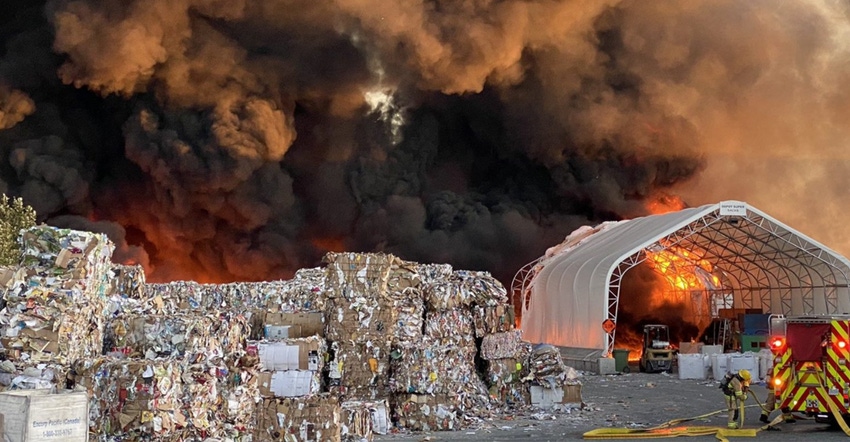The waste and recycling industry faces various challenges daily, one of which being the risk of fires. This is mainly due to the nature of our operations and items such as lithium-ion batteries that end up in the wrong waste or recycling streams.

The waste and recycling industry faces various challenges daily, one of which being the risk of fires. This is mainly due to the nature of our operations and items such as lithium-ion batteries that end up in the wrong waste or recycling streams.
In 2022, the industry was bombarded with fires, ranking the worst year for waste and recycling facility fires in the U.S. and Canada since I began reporting the data in 2016. Last year, there were 390 unique fire incidents reported at waste and recycling facilities in the U.S. and Canada, and based on reasonable assumptions, we can extrapolate that 2,400-plus facility fires occurred in 2022.
To provide a more detailed look at the risk these fires present to the industry and the solutions to prevent these fires, Fire Rover has released the 6th edition of the "Waste & Recycling Facility Fires Annual Report,” which breaks down the hazards of different fire incidents by material, state, tonnage and more with the ultimate goal of finding new trends or learnings from these incidents in an effort to reduce future incidents.
The report, which includes data from 2016-2022, unveils a growing threat to the waste and recycling industry: Lithium-ion batteries. While not a new threat, fires caused by lithium-ion batteries are on the rise and getting more severe.
For example, in November 2022, the New York City Fire Department reported “191 fires, 140 injuries and six deaths from lithium-ion fires in the city.” Councilwoman Joann Ariola, chair of the Committee on Fire and Emergency Management, said the city is on track to more than double the number of lithium-ion battery-related fires. Furthermore, across the world in Australia, firefighters have stated that the country “is not prepared” for the fire risk of lithium-ion batteries used in e-scooters, bikes, cars, etc.
With all the hoopla surrounding lithium-ion batteries as the main culprit of fires, we cannot overlook the fact that in the waste and recycling industry, fire hazards are caused by several different factors. In fact, most of the data I have seen show that batteries are responsible for about half of the fires we see in our waste and recycling streams. Other factors like accelerants, pressurized tanks, explosives and more have long been causing fires at our waste and recycling operations and cannot be overlooked.
To provide a deeper understanding of these threats and the steps the industry can take to prevent these fire incidents, the report covers:
The causes of fire incidents
Fire causation trends
A breakdown of facility fires by state and province
Year-over-year data comparisons
The consequences of fire incidents, including injuries, illnesses and deaths
Deep dive into Fire Rover incident data
Solutions such as Fire Rover, education, investing in technologies, implementing proven best practices and extended producer responsibility legislation
And more
To learn more about the report, register for Fire Rover and the National Waste & Recycling Association’s upcoming webinar, “Lithium-ion Fires Are Everywhere: An In-Depth Report on Waste & Recycling Facility Fires in the US/CAN,” held March 14 at 11:30 a.m. ET. During the webinar, we will discuss highlights from the report and share how the industry can better work together and with others to prevent the risk of fires.

About the Author(s)
You May Also Like




